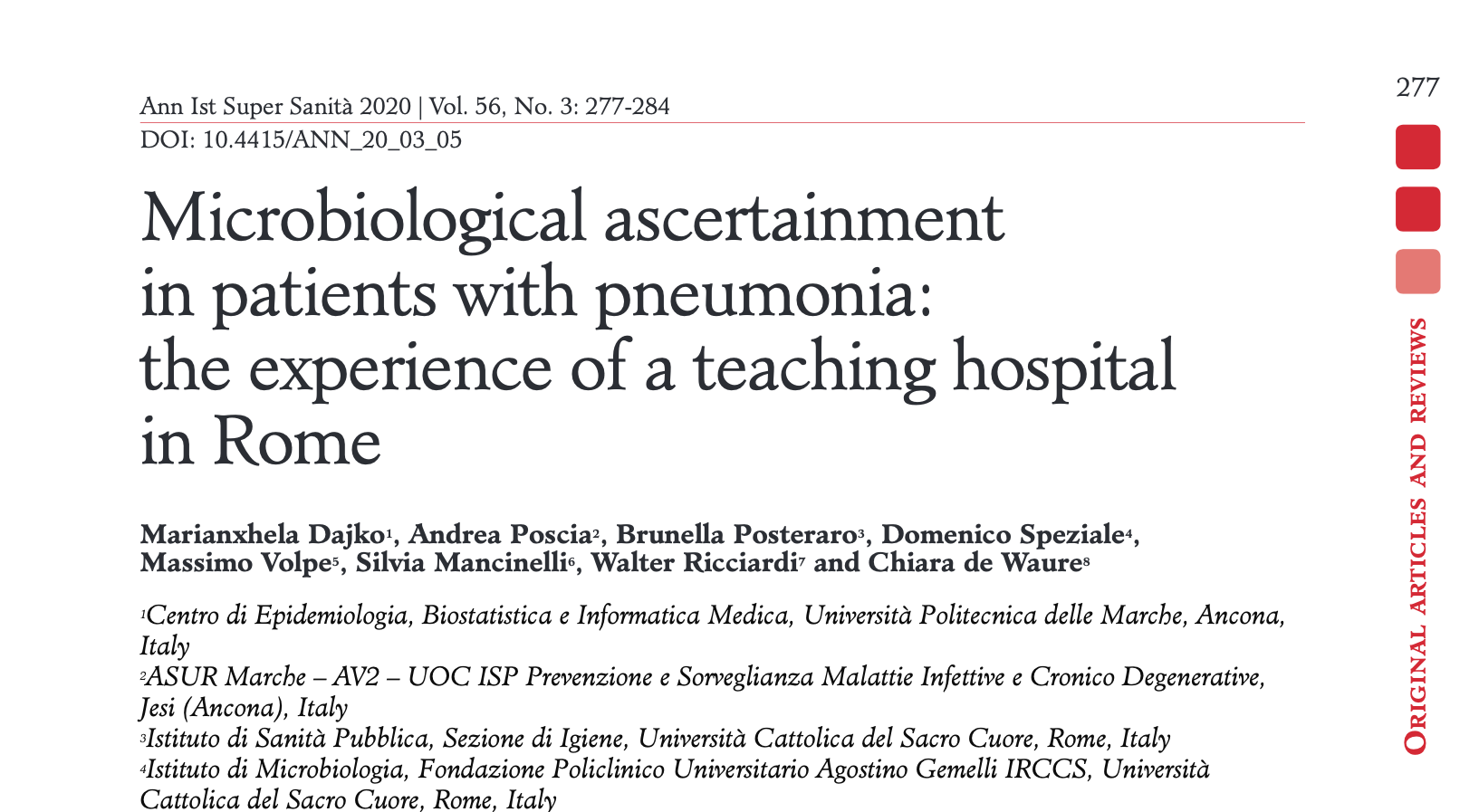Microbiological ascertainment in patients with pneumonia: the experience of a teaching hospital in Rome
Marianxhela Dajko, Andrea Poscia, Brunella Posteraro, Domenico Speziale, Massimo Volpe, Silvia Mancinelli, Walter Ricciardi, Chiara de Waure
Abstract
Objectives. Pneumonia still remains a problem from the clinical and public health viewpoint
because of the relevant epidemiological burden. The etiological diagnosis is important
in the light of avoiding unnecessary antibiotic treatment and choosing the most
appropriate therapeutical approach. This study is aimed at providing evidence on the
proportion of microbiological ascertainment in pneumonia-related hospitalizations in
one of the most important teaching hospitals in Rome.
Methods. The study relied on the record linkage of two administrative databases of the
same hospital: the electronic hospital discharge register and the microbiology laboratory
surveillance database.
Results. 2819 records were identified, where 46% had a microbiological ascertainment,
significantly higher in males than in females (51% vs 40%) and in cases of pneumonia
reported in secondary diagnosis instead of primary diagnosis (52% vs 42%). Medical patients
had significantly lower proportion of ascertainment compared to surgical patients
(43% vs 67%) whereas there were not differences between patients with emergency and
elective admission. The overall mortality was 17%. Mortality was significantly higher: in
surgical compared to medical patients (27% vs 15%), in ventilated compared to not ventilated
patients (41% vs 11%), in cases with secondary diagnosis of pneumonia compared
to a primary diagnosis (23% vs 11% ) and in hospitalized in intensive care unit-ICUrather
than in non-ICU (71% vs 12%).
Conclusion. The proportion of microbiological ascertaiment in pneumonia remains less
than 50%. Albeit in line with other evidence, this result should call the attention on the
impact of unknown etiological diagnosis on antibiotic treatment and resistance.




Commento all'articolo